Accounting Software includes a class of computer programs that perform accounting operations. The simplest accounting programs, sometimes called personal finance managers, are single-entry systems that automate check writing and record keeping.
Double-entry systems include functions for general ledger, accounts receivable, and accounts payable. More sophisticated systems also support functions for payroll, inventory, invoicing, and fixed assets. Some high-end systems even support sales analysis and time billing.

Electronic billing is the electronic delivery and presentation of financial statements, bills, invoices, and related information sent by a company to its customers. Electronic billing is also referred to as the following:
e-billing
EBPP — electronic bill presentment and payment
EIPP — electronic invoice presentment and payment
Certain electronic billing applications also provide the ability to electronically settle payment for goods or services. Customers of banks and billing companies can use the internet or the phone to conveniently remit payments as well as access their billing information. The service is also supported by customer service representatives (CSRs) contacted directly by the consumer to facilitate payments or receive general assistance and answer questions.
EBPP provides billing companies the ability to demonstrate to their customers that they are technologically-advanced companies with a primary concern for customer convenience and satisfaction. In addition, EPBB can produce substantial savings to traditional print & mail billing and payment remittance. An added benefit is a significant reduction in the use of paper.
Enterprise Resource Planning Software (ERP) or Manufacturing Requirements Planning Software (MRP) is a complete enterprise wide business solution that attempts to integrate all departments and functions within a company into a single computer system. ERP or MRP systems are defined by their breadth of functionality and completeness of coverage for all key business areas in an industry. ERP systems are typically implemented with manufacturing companies that have supply chains and lists of customers to manage, but there are some ERP providers that deal with other types of industries. ERP Software can also be referred to as Enterprise Software or Job Shop Software.
Human Resources Information System (HRIS) Software is used across hundreds of industries as a means to manage the daily employee activities of a business. HRIS Software is a vital part of any organization that strives to remain healthy as an efficient business with minimized confusion surrounding its employees.
Human Resources Software often includes methods of managing time and attendance for hourly human resources. Timeclock management, attendance tracking software, payroll tracking, vacations, sick days, and personnel training records can all be managed and automated using an HRIS system.
It's crucial to stay as organized as possible when managing many members of staff. Efficient HR can be the difference between a productive day and a chaotic one.
On-Line Analytical Processing (OLAP) is a category of software technology that enables analysts, managers and executives to gain insight into data through fast, consistent, interactive access to a wide variety of possible views of information that has been transformed from raw data to reflect the real dimensionality of the enterprise as understood by the user.
OLAP functionality is characterized by dynamic multi-dimensional analysis of consolidated enterprise data supporting end user analytical and navigational activities including:
calculations and modeling applied across dimensions, through hierarchies and/or across members
trend analysis over sequential time periods
slicing subsets for on-screen viewing
drill-down to deeper levels of consolidation
reach-through to underlying detail data
rotation to new dimensional comparisons in the viewing area
OLAP is implemented in a multi-user client/server mode and offers consistently rapid response to queries, regardless of database size and complexity. OLAP helps the user synthesize enterprise information through comparative, personalized viewing, as well as through analysis of historical and projected data in various "what-if" data model scenarios. This is achieved through use of an OLAP Server.
Project management software is a term covering many types of software, including scheduling, cost control and budget management, resource allocation, collaboration software, communication, quality management and documentation or administration systems, which are used to deal with the complexity of large projects. Some notable project management applications are provided in this List of project management software.
Workforce Management (WFM) is sometimes referred to as an HRMS system, or even part of the larger ERP systems. There are many software vendors within this space. In addition, there are niche players who specialize in one or two areas of practice. Specifically, these areas may include:
Payroll & Benefits
HR Administration
Time & Attendance
Career & Succession Planning
Talent Management and/or Applicant Tracking
Learning Management and/or Training Management
Performance Management
Forecasting and Scheduling.
A Workforce Management solution can also refer to software that optimally plans and dispatches field service technicians and their properly stocked vehicles to a customer's location in a timely manner in order to deliver on their service commitments. Components include:
Demand Management - forecast work orders to help plan the number and skills of technicians that will be needed
Workforce Scheduler - uses predefined rules to automatically optimize the schedule and use of resources (people, parts, vehicles)
Workforce Dispatcher - automatically assigns work orders within predefined zones to particular technicians
Mobile Solutions - Mobility allow dispatchers and technicians to communicate in real time.

